When choosing between Shopify and Shopify Plus, the main difference lies in their target markets: Shopify serves small to mid-sized businesses, while Shopify Plus is built for high-volume merchants doing over $1 million in annual sales.
Key differences:
- Cost: Shopify starts at $32/month while Shopify Plus starts at $2,300/month with options for yearly terms
- Support: Regular Shopify has standard 24/7 support; Plus provides dedicated merchant success managers
- B2B Features: Plus includes wholesale channel with separate storefronts and custom pricing; not available in regular plans
- Server Power: Plus handles 40x more checkouts and offers semi-dedicated servers for faster speeds during high traffic
- Store Control: Regular Shopify limits you to 15 staff accounts and one store; Plus gives unlimited staff accounts and nine expansion stores
| Shopify Plus | Shopify Basic | |
| Pricing | Starting at $2,300/mo (3-year term) | $24/mo (billed yearly) |
| Staff Accounts | Unlimited | No |
| Transaction Fees | 0.2% | 2% |
| Inventory Locations | 200 | 10 |
| Checkout Capacity | 40x standard | Standard |
| API Capabilities | Up to 10x on select APIs | Standard API limits |
| Headless Storefronts | 25 | 1 |
| Markets | 50 markets included | 3 markets included |
| POS Features | POS Pro - 20 locations included (or 200 with Shopify Payments) | POS Lite |
| Support | Priority support by phone or live chat | Basic live chat support |
| Custom Apps | Full data access | Limited data access (no PII) |
| Automation | Advanced automation with Flow | Basic automation tools |
What is Shopify and Shopify Plus? (Key Statistics 2025)
In 2025, Shopify’s platform supports 4.6 million online stores globally, with its core platform and enterprise solution (Shopify Plus) serving different segments of the market. According to Q3 2024 reports,
Shopify’s revenue reached $2.16 billion, marking a 26% increase from the previous year.
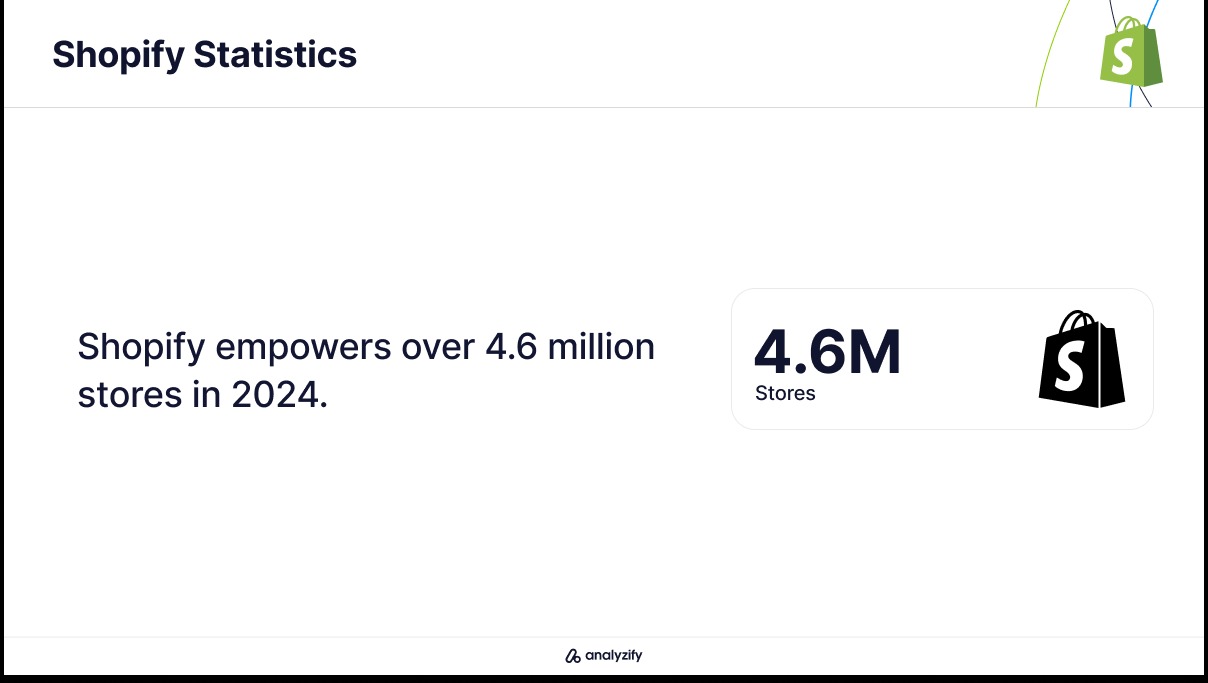
The core Shopify platform began as an online store builder and now serves small to mid-sized businesses. The platform processes transactions for over 700 million shoppers, with apparel being the most popular category—500,000 stores currently sell clothing items.
Shopify Plus, introduced in 2014, specifically targets businesses generating around $1 million in gross merchandise value (GMV). Currently, more than 50,000 Shopify Plus stores operate across 175 countries, with 60% based in the United States. These Plus merchants collectively generate over $300 billion in revenue.
Recent performance indicators show:
- Merchant solutions revenue hit $1.55 billion in Q3 2024
- Gross merchandise volume (GMV) reached $69.7 billion, up 24% year-over-year
- Operating income grew 132% to $283 million

The main distinction between the two platforms lies in their infrastructure and capabilities. While both use the same dashboard and editor, Shopify Plus adds specialized features for high-volume sales.
For enterprise users, Shopify Plus provides additional tools specifically designed for managing higher transaction volumes and complex business operations.
How much does Shopify Plus cost compared to Shopify?
The cost difference between Shopify and Shopify Plus reflects their target markets. Regular Shopify plans range from Basic to Advanced, with predictable monthly costs. Shopify Plus, however, uses a variable pricing model that starts at a higher base rate.
Regular Shopify offers three main pricing tiers with the option to pay monthly or save 25% with annual billing:
-
- The Basic plan starts at $32 monthly ($24 annually), designed for new stores and solo entrepreneurs.
- The standard Shopify plan costs $92 monthly ($69 annually), targeting small teams.
- For scaling businesses, the Advanced plan runs $399 monthly ($299 annually).
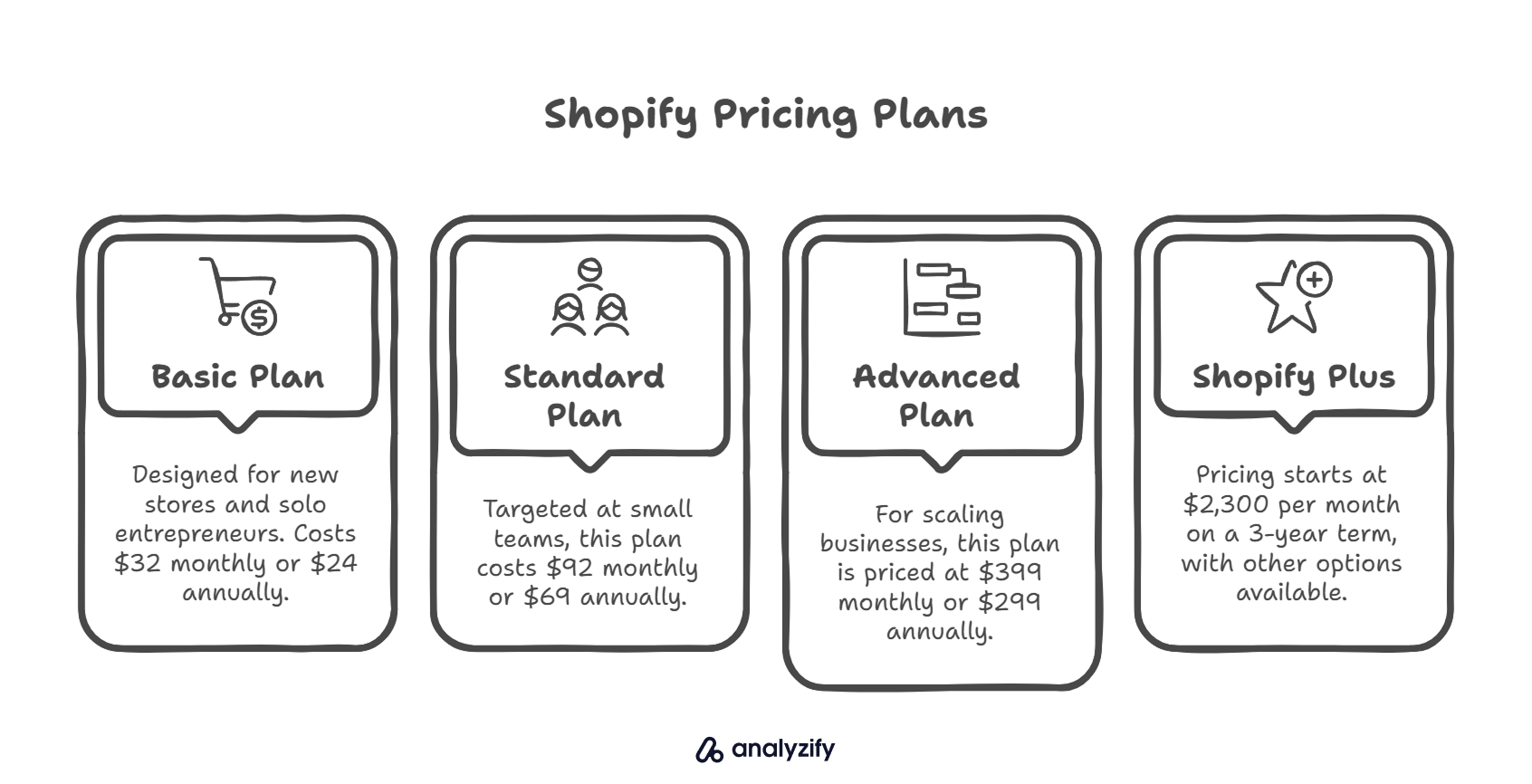
Shopify Plus pricing follows a different structure:
- Starts at $2,300 per month on a 3-year term
- $2,500 per month on a 1-year term
- Variable platform fee available for more complex business structures
- Custom pricing available based on business requirements
Transaction fees create another key cost difference between the platforms:
- Basic Shopify: 2% for third-party payment providers
- Standard Shopify: 1% for third-party payment providers
- Advanced Shopify: 0.6% for third-party payment providers
- Shopify Plus: 0.15% for third-party payment providers, 2.15% + $0.30 for domestic transactions

The payment structure also differs notably. While regular Shopify allows flexible monthly or annual billing, Shopify Plus requires a longer commitment through either 1-year or 3-year terms, with the 3-year option offering more competitive rates for high-volume merchants.
Is Shopify Plus Worth the Money?
The decision to upgrade to Shopify Plus depends heavily on your business’s revenue, growth rate, and operational complexity. The platform becomes financially viable when your annual revenue exceeds $1.5-2 million, but profit margins play a crucial role in this decision.
For a $2 million annual revenue business, the return on investment varies significantly based on profit margins:
- A business with a 10% profit margin, generating $200,000 yearly profit, might find Plus’s monthly cost straining their resources
- Those operating at 30-40% margins, with $600,000-800,000 in yearly profit, can more easily absorb and benefit from the investment
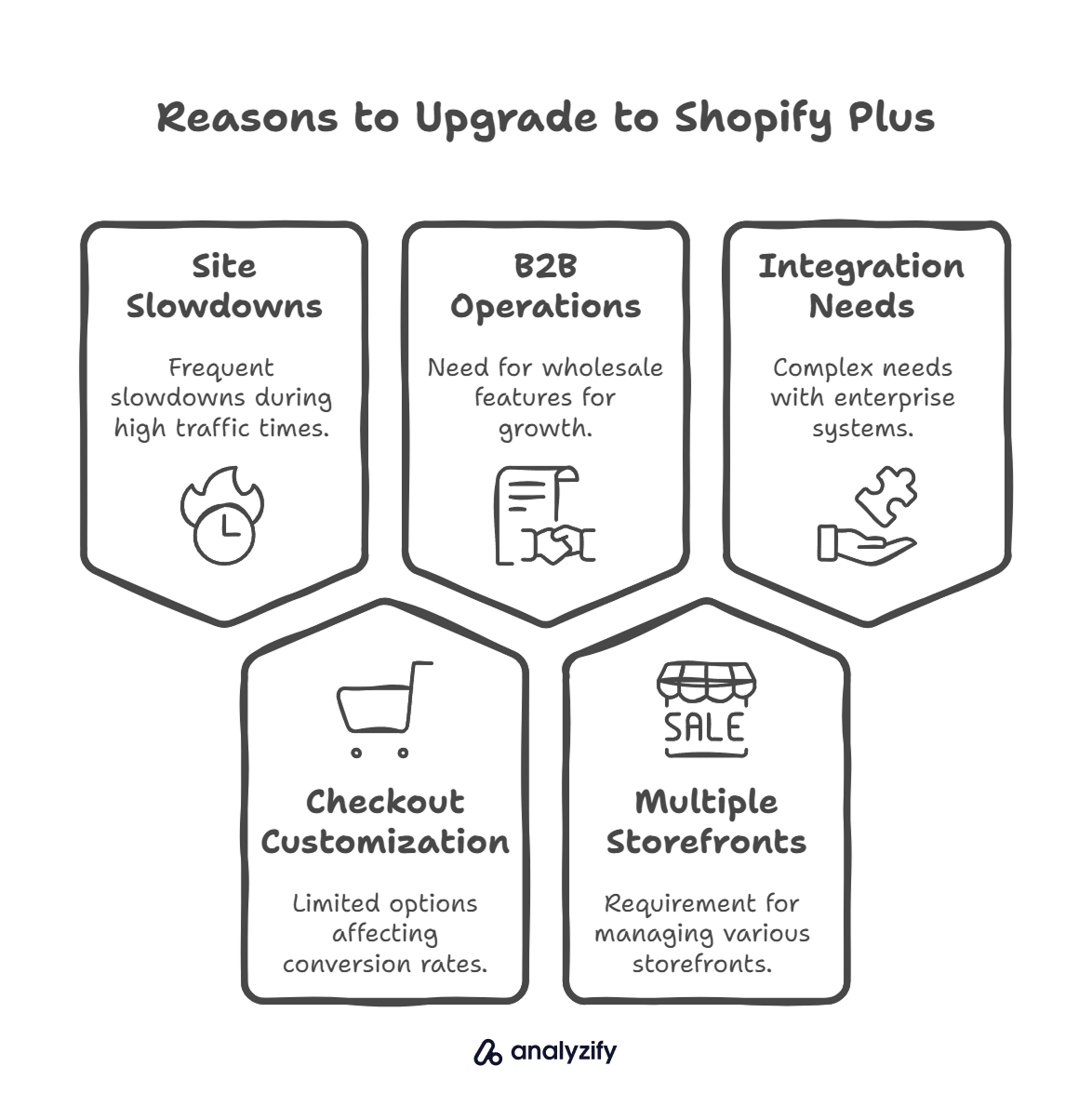
Common challenges that signal it’s time for Plus include:
- Frequent site slowdowns during high-traffic periods
- Limited checkout customization affecting conversion rates
- Growing B2B operations needing wholesale features
- Multiple storefront requirements
- Complex integration needs with enterprise systems
The platform also includes access to Shopify Plus Academy, providing comprehensive training resources for your team.
Remember that upgrading shouldn’t strain your finances - if Plus costs would significantly impact your operational budget, it’s better to continue optimizing your current setup until your revenue and margins support the upgrade.
What Can Shopify Plus Do That Regular Shopify Can’t?
Shopify Plus offers several major features not available in regular Shopify plans. Here’s how they differ:
Checkout Customization
Regular Shopify limits your checkout to basic theme modifications. With Plus, you gain complete control through the Checkout SDK. This means creating unique payment flows, adding pre-purchase offers, and implementing specialized discount rules.
During high-traffic events like Black Friday, Plus handles 40 times more checkouts compared to the 10x capacity in Advanced plans.
B2B and Wholesale Capabilities
Plus introduces a comprehensive B2B solution through a dedicated wholesale channel, which is completely absent in regular plans.
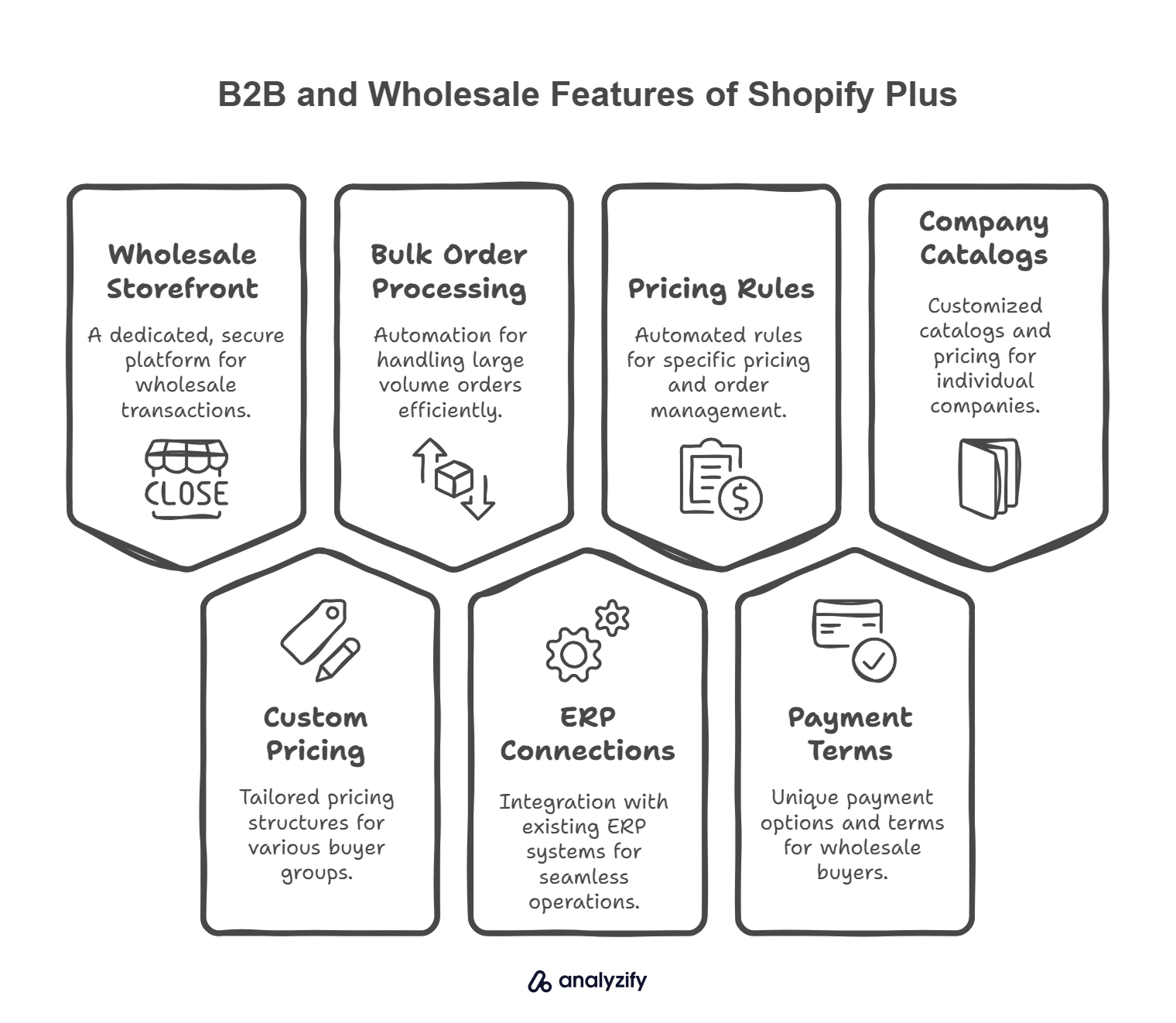
This includes:
- Separate, password-protected wholesale storefront
- Custom pricing and catalogs for different buyer groups
- Automated bulk order processing
- Direct ERP system connections
- Automated specific pricing and order rules
- Separate wholesale payment terms and checkout options
- Volume-based discounting
- Company-specific catalogs and pricing lists
Store Management
The difference in store control sets Plus significantly apart. Regular Shopify confines you to one store and 15 staff accounts. Plus removes these restrictions, providing unlimited staff access and nine expansion stores at no extra cost.

Your expanded capabilities include:
- 200 inventory locations (versus 10 in regular plans)
- 50 market access (versus 3 in regular plans)
- Centralized inventory tracking
- Individual storefronts per region
Automation Tools
Plus introduces Launchpad, a powerful automation system absent in regular plans. This tool manages complex store operations automatically.
For example, when running a flash sale, Launchpad handles all changes - from pricing updates to design modifications - without manual intervention. The system returns everything to normal once the sale ends, eliminating the risk of human error in time-sensitive operations.
Support Structure
While regular Shopify offers standard 24/7 support, Plus provides dedicated merchant success managers. These specialists understand your specific business needs and guide you through technical implementations, store optimizations, and growth strategies.
They serve as your direct line to Shopify’s resources, helping resolve complex issues quickly during critical sales periods.
Is Shopify Plus faster than regular Shopify?
The speed difference between Shopify Plus and regular Shopify comes from server infrastructure and processing capacity. Regular Shopify stores share server resources, while Shopify Plus provides enhanced infrastructure for high-volume operations.
Server infrastructure creates the main performance distinction. Shopify Plus offers semi-dedicated or dedicated servers based on your store’s needs, resulting in faster loading times and better handling of traffic spikes.
This becomes particularly important during high-traffic events like Black Friday, where Plus stores processed $9.3 billion in sales during the last shopping season.
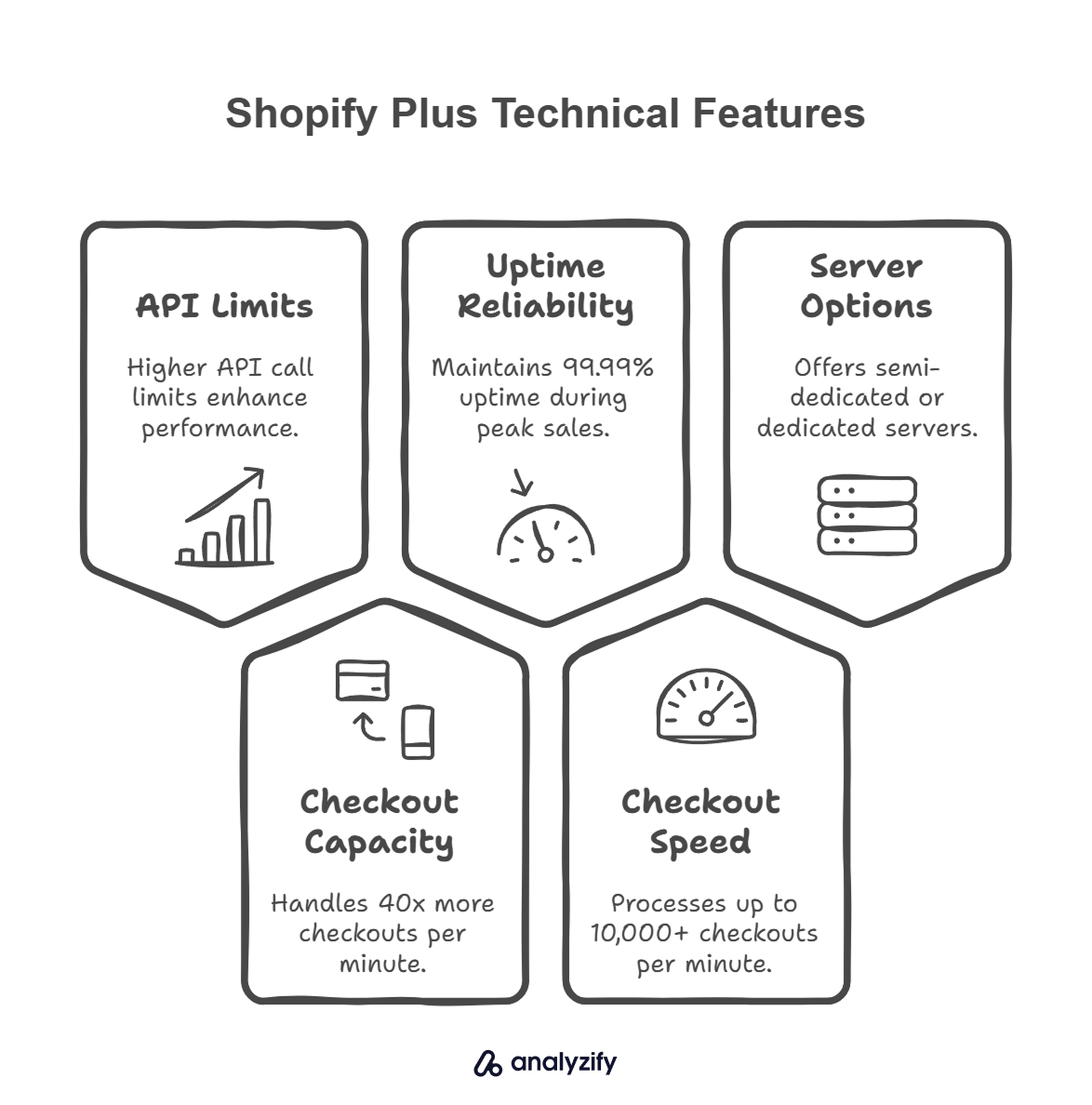
Regular Shopify and Shopify Plus differ in their technical capabilities:
- API call limits are higher on Plus
- Plus handles 40x more checkouts per minute
- Plus maintains 99.99% uptime during peak sales
- Plus processes up to 10,000+ checkouts per minute
Store speed depends on several factors beyond just the platform choice. Code quality and template structure significantly impact performance regardless of whether you’re using regular Shopify or Plus.
Poor optimization can slow down even a Plus store, while a well-optimized regular Shopify store can perform efficiently.
Shopify Plus introduces an option for “headless” implementation, which separates the frontend and backend of your store.

This setup particularly benefits stores with:
- Thousands of SKUs
- High traffic volumes
- Complex product configurations
- Multiple storefronts
The platform’s infrastructure handles unlimited bandwidth, transactions, and SKUs, supporting stores that generate significant daily traffic. This scalability ensures consistent performance even as your store grows and experiences increased customer activity.
Final Words
Are you ready to choose your Shopify platform? Look at your current sales volume, growth plans, and profit margins. Think about your team size, B2B goals, and how much server power you really need.
If you’re doing well on regular Shopify but hitting its limits, Plus might be your next step. But remember - Plus is a big investment. Make sure your business can support the higher costs before making the switch.
Shopify vs Shopify Plus: FAQ
Here are the most common questions merchants ask when deciding between Shopify and Shopify Plus, answered in plain language.
How much money do I need to make for Shopify Plus to be worth it?
You should be making at least $1.5-2 million in annual revenue to consider Shopify Plus. But more importantly, look at your profit margins. With 30-40% margins, Plus’s monthly cost ($2,300+) becomes manageable. If you’re running at 10% margins, stick with regular Shopify until your profitability improves.
What happens to my store when I upgrade from Shopify to Shopify Plus?
Your store stays exactly the same - no migration needed. You’ll keep your current setup, products, and settings. The upgrade simply adds new features and capabilities like wholesale channels, better checkout options, and more staff accounts. You’ll also get a dedicated success manager to help you use these new tools.
Does Shopify Plus make my store load faster?
Yes, but it’s not automatic. Plus gives you better server resources and can handle more traffic, but your store’s speed still depends on how well it’s built. Plus stores get semi-dedicated servers and can process 40x more checkouts than regular Shopify, which helps during high-traffic sales events.
Can I sell wholesale on regular Shopify or do I need Plus?
While you can sell wholesale on regular Shopify using workarounds like discount codes, only Shopify Plus offers a true wholesale channel. This includes separate password-protected storefronts, custom pricing for different buyer groups, and automated bulk order processing.
What’s the main reason stores upgrade to Shopify Plus?
Most stores upgrade when they’ve outgrown regular Shopify’s limits - whether that’s checkout capacity during sales, staff account restrictions, or the need for wholesale features. The dedicated support and advanced automation tools also attract growing businesses that need to save time on store management.

































